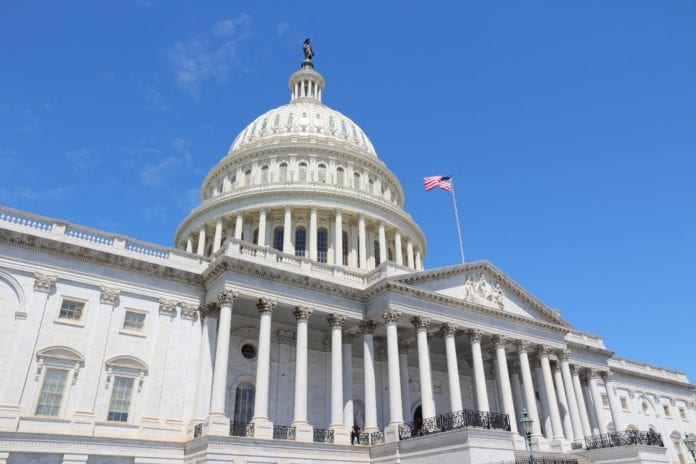Here’s a timely reminder from your friendly neighborhood FCC: Don’t use ham or CB radios to communicate while you’re planning or committing a crime. Crimes like, say, violent insurrection.
The Federal Communications Commission’s Enforcement Bureau issued the unusual warning on Sunday, 11 days after a mob of Trump supporters invaded the U.S. Capitol building to disrupt the certification of the Electoral College vote and five people died, four from the crowd and one Capitol police officer.
Part of the ensuing fallout has been mass bannings by Twitter, Facebook and others, of social media accounts associated with spreading election misinformation and the QAnon conspiracy, as well as the temporary shutdown of social media app Parler after AWS refused to continue hosting its servers and Google and Apple banned it from their app stores for violating their terms of service. Parler has since filed a lawsuit demanding its app service be restored and reappeared in greatly diminished form as of last Sunday, with help from a controversial Russian tech firm.
Amid that de-platforming backdrop, the FCC said that it “has become aware of discussions on social media platforms suggesting that certain radio services regulated by the Commission may be an alternative to social media platforms for groups to communicate and coordinate future activities. The Bureau recognizes that these services can be used for a wide range of permitted purposes, including speech that is protected under the First Amendment of the U.S. Constitution.” The Commission adds, helpfully, “Amateur and Personal Radio Services, however, may not be used to commit or facilitate crimes.”
The Enforcement Bureau reminded users of CB radios, Family Radio Service walkie-talkies and the General Mobile Radio Service that they are not permitted to transmit “communications intended to facilitate a criminal act” that is against federal, state or local laws, or “messages encoded for the purpose of obscuring their meaning.” The potential penalties include fines, equipment seizure and criminal prosecution.
The Detroit Free Press has reported that online extremist groups have promoted the use of Citizens Band radios for communication and coordination, resulting in a local surge in CB sales. Multiple press outlets have also reported that some members of the mob that invaded the Capitol on January 6 included people using two-way radios and headsets. Communications app Zello, which has used by both civilians and even public safety for ad-hoc push-to-talk voice services, confirmed in a blog post that it “discovered evidence of Zello being misused by some individuals while storming the United States Capitol building” and that it was concerned that the app could be used to organize potentially violent protests and disrupt tomorrow’s inauguration, so it deleted “more than 2,000 channels associated with militias and other militarized social movements”. However, it noted that a “large proportion of these channels had not had any activity recorded in recent months or years.”
Meanwhile, mobile and cellular technology is factoring into the identification and arrest of people who invaded the Capitol and in some cases, ransacked, destroyed, stole or otherwise vandalized items and offices in the building. In nearly every video and photograph from the event, rioters are holding up their smartphones to record, livestream or snap pictures of the event as it unfolded — and that evidence, in combination with location data from their smartphones, is being used by authorities to establish the legal cases against them. The Washington Post has pointed out that “The Capitol, more than most buildings, has a vast cellular and wireless data infrastructure of its own to make communications efficient in a building made largely of stone and that extends deep underground and has pockets of shielded areas. Such infrastructure, such as individual cell towers, can turn any connected phone into its own tracking device. … Congressional investigators and federal prosecutors can also identify devices and users who may have connected wittingly or automatically to congressional guest WiFi networks — unless rioters made a point of deactivating their devices or leaving them behind during the takeover.”
Many of them, it appears, did not. And even wiping substantial amounts of data from the smartphones themselves after the fact, which at least one arrestee appears to have done, doesn’t erase all of the related network attachment information that may be available to investigators. According to an arrest warrant for Christine Priola, a former school occupational therapist from Willoughby, Ohio who was photographed in one of the evacuated Capitol chambers with other rioters and had her Apple iPhone in hand while doing so, federal investigators were “unable to recover the data for photos, videos, chats, or messages from approximately January 4 through January 7, 2021. Agents were also unable to recover device location data for January 6, 2021 from 5:40 AM to 4:17 PM.” However, they were able to get the device’s location data for January 6, 2021 at 4:23 p.m. — when Priola’s smartphone connected to a Wi-Fi network just northeast of the Capitol.

